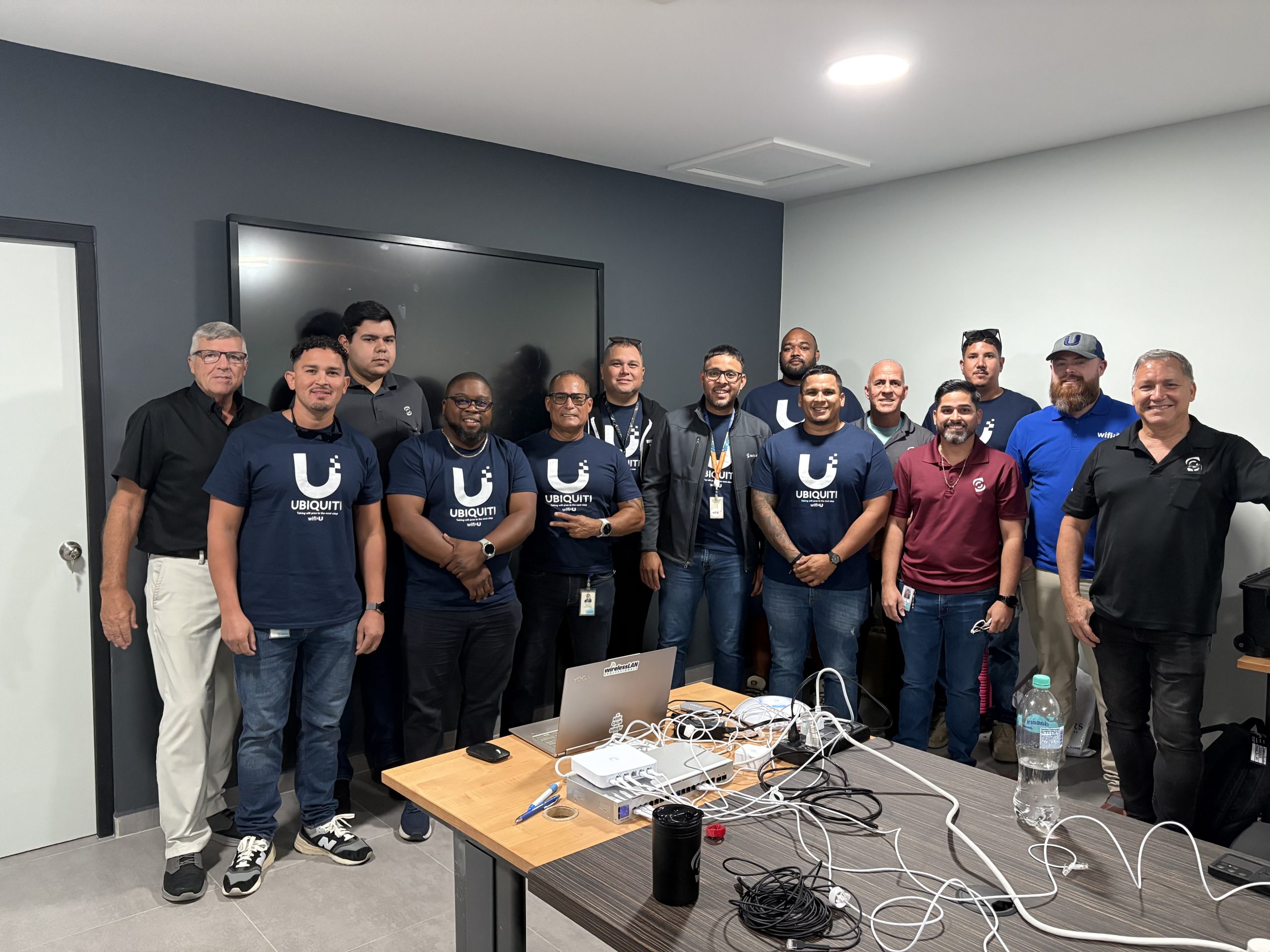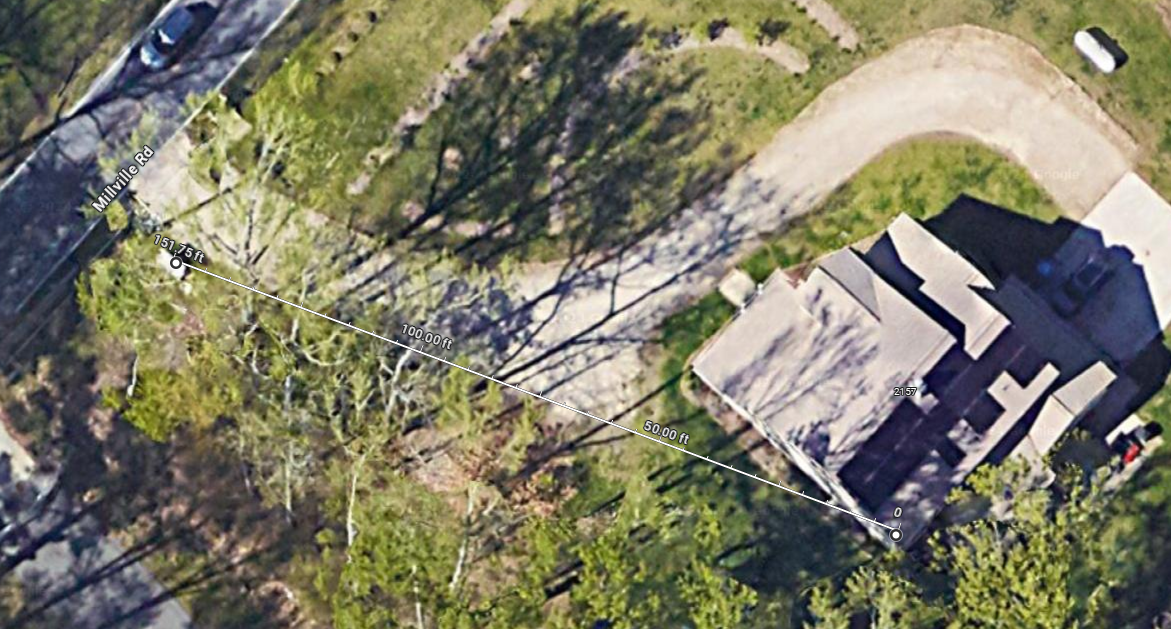Miami Training





🌴 Wifi‑U is heading to Miami! We’re thrilled to be attending the Unifi World Conference this November — and the countdown is officially on!
Our team will be on-site next week, and we’d love to connect with you. Let us know if you’ll be there — let’s meet up!
Can’t make it in person? No worries — we’ll be live-streaming select sessions, so be sure to tune in and join the experience remotely.
🎓 Plus, we’re hosting Certified Ubiquiti Trainings right after the conference, right in Miami. Want details? Shoot us a message at info@wifi-u.com.

 |
 |
 |
To mesh, or not to mesh? And honestly, it’s a fair question. Mesh networks sound magical — simple, seamless coverage! But before you go mesh-crazy, let’s talk about what really happens behind the scenes.
Using the Wi-Fi Calculator, we ran a little experiment.
In the first picture you see that at 43.8 ft and using a U7Pro and a client with a Wi-Fi 7 card, we have an expected real-world speed of 310 Mbps. I can only achieve an MCS of 8 so I can’t take advantage of the high throughput speeds available with WiFi 7

When I add a U6 Mesh halfway between the devices I have a 430Mbps link between the Pro and the Mesh

But only a 215Mbps link to the Client. What happened? Even though the Signal between the Mesh Device and the Client is excellent and I can achieve an MCS of 1,1 I still only get half the throughput that the Mesh Device is receiving.
⚠️ Welcome to the Law of Halves
Here’s the catch: Wi-Fi is half-duplex, meaning it can’t send and receive data at the same time. So when your Mesh AP talks to the main AP and your device, it’s splitting its attention — and its throughput.
Every time you add a mesh hop, your speed gets chopped in half:
And don’t even think about going beyond 4 — Ubiquiti won’t let you. The devices just won’t stay connected.
🛠️ So… Should You Mesh?
Here’s the golden rule: Mesh is great for small spaces with a few out-of-range clients — especially when running cable isn’t an option.
It’s installer-friendly, but user-unfriendly if you’re chasing high speeds or supporting lots of devices. If you can wire it, do it. If you can’t, mesh responsibly.
💡 Final Thoughts
Mesh networks are like fast food — convenient, but not always the healthiest choice for your network’s performance. Use them wisely, and your users will thank you.
Author: Eric Weber

wifi-U is excited to return to the Church IT Network this year as a Silver Partner!
The Church IT Network is a coalition of churches that meet both regionally and at an annual conference to discuss strategies and solutions to the IT challenges facing their ministries.
Last year, Eric and Ryan attended for the first time, and Ryan delivered a powerful presentation on using Unifi Protect to keep your church safe. This year, Ryan will be presenting “Let There Be Light…and Wi-Fi, and Cameras, and Door Access,” which will be bigger, better, and even more fun than last year’s presentation.
We’ll also have a booth with some Unifi demonstration equipment, and we’ll live-stream portions of the conference. If you’re in Cincinnati, be sure to swing by and say hello!
🚫 Don’t let your UniFi network stay stuck in “Automatic.” ✅ Take control with the right Ubiquiti training.
In our latest video our instructor, Ryan breaks down:
UWA, URSCA, UBWA, + wiFi‑U custom classes for pros and home users
To help YOU find the right class! Whether you’re an IT pro, WISP operator, small business owner, or just starting with UniFi at home — this guide will help you level up fast.
🎥 Watch now!
At wifi‑U, we’re all about helping you get the most out of your wireless networks. One feature that often flies under the radar but can make a big impact on performance is band steering. If you’ve ever wondered how your devices choose between 2.4 GHz and 5 GHz Wi-Fi bands — or why they sometimes seem stuck on the slower one — this post is for you.
Learn how it works, when to use it, and why it’s a must for modern networks. 📖 Check out our new Youtube Video Here!
Watch Our New YouTube Video with Wifi-u Instructor Ryan Haag!
In this video, Ryan from Wi-Fi U takes you inside his Unify Wireless Admin and Routing, Switching & Cybersecurity class in Lansing, MI. You’ll get an exclusive tour of the hands-on student setups featuring Wi-Fi 7 access points, UCG Ultra gateways, PoE switches, VLAN labs and OSPF routing exercises. Why Take a Hands-On Networking Class? Interactive labs accelerate learning and build confidence far beyond passive video tutorials. You’ll configure gear side by side with an experienced instructor, troubleshoot in real time, and leave the classroom ready to deploy unified network solutions in your environment. See why paying for live instructor-led training beats YouTube University every time.
Register now for upcoming Unifi Wireless Admin and Routing, Switching & Cybersecurity classes. Equip yourself with confidence to design, deploy, and secure enterprise Wi-Fi networks.

When it comes to smart security, simplicity often wins—and Ubiquiti’s SuperLink proves that point beautifully. This compact device, essentially a small box with an antenna, quietly solves a major problem: enabling long-distance connectivity for battery-powered sensors, especially in environments where Bluetooth falls short.
🛠️ Setup & Performance
I had the chance to test out a SuperLink early on. The initial setup had a bit of a hiccup in that all my originally adopted sensors would not migrate to the Superlink. After I reset and readopted them though, they popped right up. I decided to place some sensors outside while keeping the Superlink in my home. One sensor went on our pirate ship playhouse, another in our side yard, and the last one all the way out by the entrance to our driveway, over 150 feet away. Despite the freezing conditions, the sensors stayed reliably connected.
🚨 Big things are brewing at Ubiquiti this August—they’re teasing a wave of new sensors, and now’s the perfect time to grab a Superlink and get ahead of the curve. I believe the Superlink could mark a turning point, where everyday users start ditching costly ADT monitoring in favor of Unifi Protect’s push notifications to secure homes, rentals, and small businesses.
With extended-range sensors coming in August, we might even see Unifi gear expanding into agriculture and other underserved sectors that traditional security companies tend to overlook.
Bottom line? The Superlink has me genuinely excited about what’s next for Unifi Protect.
Author: Ryan Haag